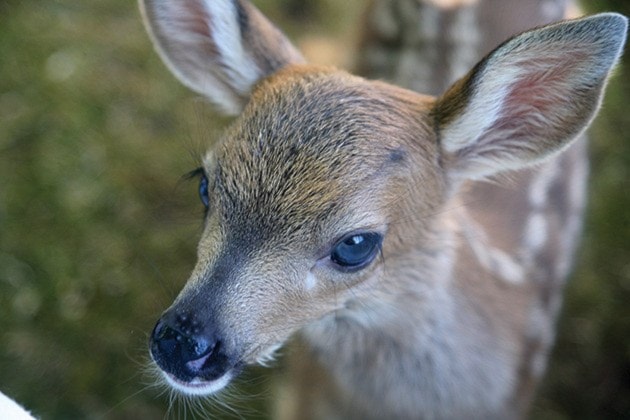Erin Haluschak
Record staff
Five times a day fawns at Mountainaire Avian Rescue Society are fed a fortified goats milk, in hopes of aiding their recovery for rehabilitation.
Each feeding requires not only food, but other supplies such as paper towels and toilet paper staff and volunteers use to assist eight fawns.
The Merville-based organization is nearly at capacity for the number of fawns they can care for, and are quickly using a significant portion of their operating fund caring for the animals, explained educator Maj Birch.
“It’s a daily expense; we depend on donations.”
They are seeking donations at a critical time, as they are hoping to aid as many newborn fawns while raising money for their MayDay for M.A.R.S. campaign - to assist in reaching a $350,000 goal to build a new wildlife hospital.
“The animal care certainly makes a hit in donations for the new property,” noted Birch.
“We are in desperate need for more funds, and we’re in an urgent position to build and move (to the new property) by 2017.”
In February M.A.R.S took possession of a 10.4-acre piece of property on the Old Island Highway in Merville, on the corner of Williams Beach Road and the highway.
The property was purchased thanks to a generous gift by a friend of the organization - Michele Woodrow - who bequeathed $300,000.
Currently, the focus is on the fawns, with a plea for donations of any kind, including puppy pens - even on loan - from the public in order to properly house and separate the deer to lower the risk of disease or infections spreading.
So far since May 3, the organization has dealt with 19 fawns. Birch said it’s common to see fawns alone in the forest, and warns the public to leave them alone if away from a highway or out of danger.
“The mom usually goes away, and if it stays (near the fawn), it just attracts predators. Sometimes you’ll find them in long grass, sometimes in the forest.”
If fawns are found near warm roadways, she encourages people to help move the fawns away - ideally with a blanket or on their own, but added people can pick them up and move them into the forest.
“Their mom will find them. We’ve had a lot of success putting them back. It’s a myth that humans will transfer smell (onto the deer).”
The recovery time spent by fawns at the centre is about six weeks before they get transferred to another location in the Valley for a slow release.
To donate or for more information, visit wingtips.org.
